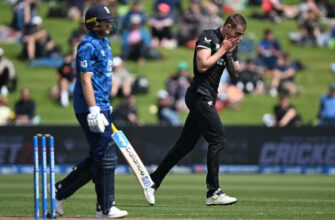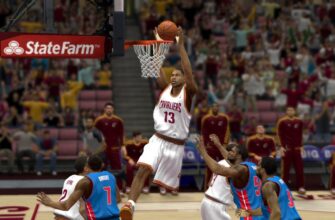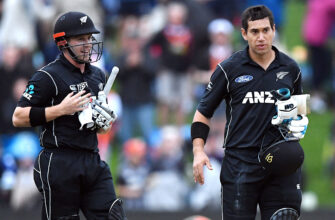The Ryder Cup, golf`s most passionate team spectacle, is a contest often defined by its battlegrounds. Home soil offers undeniable advantages: the roar of familiar crowds, the intimate knowledge of every undulation, and the comforting psychology of an entrenched fortress. Yet, it is the victories forged in the crucible of enemy territory, across the vast expanse of the Atlantic, that truly etch themselves into legend. As Captain Luke Donald prepares Team Europe for the 2025 Ryder Cup at Bethpage Black, the objective is stark, yet electrifyingly clear: secure a phenomenal fifth away victory. History, a stern but often inspiring taskmaster, reminds us of the immense challenge. Europe, for all its recent dominance on home turf, has only managed to conquer the formidable American challenge four times on U.S. soil. Each of these triumphs was more than just a win; it was a defiant statement, a masterpiece of resilience, and a testament to team spirit.
1987 – Muirfield Village, Ohio: The Breakthrough
Before 1987, the idea of Team Europe winning a Ryder Cup on American soil seemed almost fantastical. The U.S. boasted an unbroken 13-0 home record stretching back six decades, a seemingly impenetrable barrier. Europe’s 1985 victory at The Belfry was significant, but many still viewed it as an anomaly, a momentary lapse in American supremacy. Jack Nicklaus`s Muirfield Village, his cherished home course, was intended to reassert that dominance.
Tony Jacklin’s European squad, however, arrived with an entirely different script. Spearheaded by the incomparable fire of Seve Ballesteros and the steely precision of Nick Faldo, they seized control from the outset. Day one saw Europe surge to a commanding 6-2 lead, sweeping all four afternoon fourball matches with a swagger that stunned the home crowd. By Saturday’s close, the lead had swelled to an almost unbelievable 10½-5½. History, for the first time, felt truly within grasp.
Sunday singles inevitably brought a fierce American resurgence, fueled by pride and desperation. But Europe held firm, displaying a gritty determination that matched their earlier flair. Eamonn Darcy’s memorable victory over Ben Crenshaw – a match perhaps best remembered for Crenshaw`s putter-snapping frustration, forcing him to putt with an iron – epitomized Europe’s resolve. Fittingly, it was Ballesteros, Europe`s leading scorer with four points, who delivered the decisive blow, closing out Curtis Strange 2&1. The 15-13 triumph was more than a scoreline; it was a paradigm shift. Europe had proven they could not only compete but conquer on foreign soil. The psychological barrier had been shattered.
1995 – Oak Hill Country Club, New York: Clinical Precision
By 1995, the Ryder Cup had evolved from a routine American procession into a truly competitive, often bruising, encounter. Yet, winning in the U.S. remained an exceptional achievement, an endeavor requiring a blend of skill, courage, and nerves of steel.
Under the seasoned leadership of Bernard Gallacher, captaining for a third and final time after two agonizingly narrow defeats, Europe landed in Rochester. The American team, while featuring formidable major winners like Corey Pavin and Fred Couples, also included hungry rookies such as Tom Lehman and a young Phil Mickelson. Europe, conversely, brought a core of the world`s elite, including Nick Faldo, Bernhard Langer, and Colin Montgomerie, signaling a deep well of talent.
Despite Europe`s star power, the U.S. carved out a 9-7 lead heading into Sunday`s singles. Given their unbroken streak of winning the singles session in the previous four Ryder Cups, American victory seemed a foregone conclusion. But Gallacher`s team had other ideas, staging one of the Ryder Cup’s most clinical Sunday performances.
The visitors secured a remarkable 7½ of the 12 available singles points, turning the tide with precision and grit. In a testament to team depth, it was not one of Europe`s superstars but the unheralded Irish rookie Philip Walton who held his nerve, battling Jay Haas to a 1-up victory and securing the pivotal point that sealed a 14½-13½ triumph. It was a victory forged in understated excellence, proving that when the stakes were highest, Europe delivered.
2004 – Oakland Hills Country Club, Michigan: The Statement
If any Ryder Cup could be described as a masterclass in relentless dominance, it was the 2004 encounter at Oakland Hills. From the very first tee shot, Bernhard Langer’s European squad appeared sharper, hungrier, and more cohesive than their American counterparts. The final score of 18½-9½, a record-breaking margin for Europe at the time, barely scratches the surface of the sheer comprehensive nature of this victory.
Europe dominated almost every session, establishing an early 6½-1½ lead by the close of Friday – notably dismantling the much-hyped pairing of Phil Mickelson and Tiger Woods. By Saturday evening, the score stood at a daunting 11-5. The American team faced an Everest-sized challenge.
Sunday offered no respite. The U.S. managed to salvage only four singles matches, succumbing to a veritable European “pummeling.” What made this victory particularly potent was the collective contribution: every single European player earned points, a rare and powerful demonstration of unity and depth. While stars like Sergio Garcia and Lee Westwood shone brightly, it was the overwhelming collective effort that utterly eclipsed the American challenge. Colin Montgomerie would later reflect, “The best team I’ve ever been part of.”
Oakland Hills wasn`t just a win; it was a resounding statement, a declaration that European golf had not just arrived, but had ascended to a new echelon of consistent excellence.
2012 – Medinah Country Club, Illinois: The Miracle
Few comebacks in the annals of sport rival the sheer audacity and emotional intensity of what Team Europe achieved at Medinah in 2012. Trailing by a seemingly insurmountable margin of 10-6 heading into the final day, and facing a red-hot U.S. team spurred on by a fervent Chicago crowd, José María Olazábal’s side looked unequivocally beaten. What unfolded next was a seismic shift, a crescendo of improbable heroics.
The faintest glimmer of hope had sparked late on Saturday, when the talismanic Ian Poulter, a man seemingly possessed, birdied his final five holes in his fourball match alongside Rory McIlroy, giving Europe a fragile lifeline. Then, on Sunday, a collective surge began. European players, one after another, started flipping matches that had seemed lost.
Luke Donald set the tone with an early victory. Rory McIlroy, arriving to his tee time late due to a time zone mix-up, still delivered a crucial point. Justin Rose’s breathtaking finish, featuring back-to-back birdies and a 40-foot putt on the 17th to edge Mickelson, was pure theater. And then, under unimaginable pressure, Martin Kaymer sank a nerveless putt on the 18th to retain the cup. The final, symbolic act came when Tiger Woods missed a short putt to halve his match with Francesco Molinari, confirming Europe’s stunning 14½-13½ triumph.
Europe had won an astonishing 8½ of the 12 available singles points, leaving the U.S. team and its supporters in stunned silence. Olazábal, wearing a silhouette of his late friend Seve Ballesteros on his chest, dedicated the win to the man who had passed a year prior. Emotion flowed freely from every European player, encapsulating “The Miracle of Medinah”—arguably the greatest comeback in Ryder Cup history.
The Road to Bethpage Black 2025: A Legacy to Uphold
As Luke Donald now steers Team Europe towards Bethpage Black in 2025, these four legendary away victories serve as both inspiration and a stark reminder of the monumental task ahead. Each win was a narrative of defiance, skill, and unyielding belief against overwhelming odds. Muirfield saw them break the unbreakable. Oak Hill showcased their clinical resolve. Oakland Hills delivered a powerful statement of collective dominance. And Medinah? Medinah proved that even when hope seemed extinguished, the European spirit could conjure miracles.
The quest for a “fantastic fifth” is not merely about adding another trophy; it is about extending a legacy of grit, tactical brilliance, and unparalleled team chemistry. Bethpage Black, with its notoriously tough layout and passionate New York crowds, will present a stern test. But as history unequivocally proves, Team Europe thrives on stern tests, especially when playing far from home. The stage is set for another chapter in golf’s most compelling transatlantic rivalry. Will Donald’s men write the next great away triumph? The golf world waits with bated breath.







